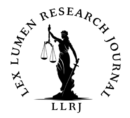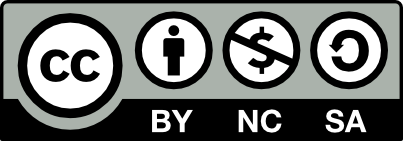Written by
Riya Vishnoi,
Intern-Lex Lumen Research Journal,
June 2025
INTRODUCTION
Recently the phrase trial by media has been used to describe a component of media activism It is described as the influence of television and newspaper reporting on an individual’s reputation by encouraging a general sense of guilt regardless of the outcome of any court case In high-profile cases, the media often creates a lynch mob-like atmosphere of public fear, which not only makes a fair trial impossible but also leads to the accused being found guilty regardless of the outcome of the trial. A media trial occurs when the media takes on the role of an adversary and uses the public as judges to hold their own trials. The media often exhibits a harsh disregard for the mental health of all parties involved, especially the accused and the victims. They violate their privacy, encroaching upon the rights guaranteed by Article 21, which protects the right to privacy. The focus of this blog is to investigate how media trials impact India’s right to a fair trial.
Media Trial effects on the right to fair trial
Media functions as a channel that connects existing information with the information that is communicated through processing, shaping, and presenting it to the audience. The idea of media trial originates from the principle of a fair trial, which is rooted in the Indian criminal justice system under article 21The consequences of media trials are harmful and violate the procedural safeguards under section 223 BNSS necessary for a fair trial. The foundation of the right to privacy can be traced back to natural rights, which are fundamental, inherent, and inalienable. There are strong legal bases for the right to privacy in International Law and human rights. As a result, the judiciary used Article 21 of the Indian Constitution to support its numerous rulings that outlined the right to privacy. The Hon’ble Supreme Court of India rendered a significant decision in the case of Kharak Singh vs. State of UP under Article 21 of the Constitution, which declares that no one shall be deprived of their life or personal liberty unless otherwise permitted by law, implicitly protects the right to privacy. Trial by Media coverage, often speculative, can lead to a presumption of guilt, violating the principle of “innocent until proven guilty” under Article 21 and Article 14.
Instances that illustrate how media trials can harm an individual’s reputation and a component of right to life exert pressure on the judiciary to act thereby compromising the due procedure of law. A judicial officer cannot completely clear his mind from whatever he has seen, heard or read since the mind of judicial officer human is fallible leading to the decision impacted in one way or another.
AARUSHI TALWAR MURDER CASE
In this particular case, the media reached a verdict prior to the court’s decision, asserting that the murder of Arushi Talwar was a premeditated act orchestrated by her father Dr. Rajesh Talwar, plotted with his spouse, Dr. Nupur Talwar. During the course of investigation reporters inundated the crime scene jeopardizing the integrity of evidence multitude of media organizations widely disseminated claims about an inappropriate relationship between Arushi and Hemraj, while also alleging that the father was involved in an extramarital affair. Furthermore, this constituted a violation of the privacy rights of both the deceased and the accused. Tragically, the sensationalism surrounding this case left both parents without the mental space necessary to mount a defense, and as has been recently established, all charges against them were dismissed by the Hon’ble Supreme Court. This raises the question: after the character assassination perpetrated by media trials, will the parents ever be able to return to a state of normalcy?
SHEENA BORA MURDER CASE-In this instance, on April 24, 2012, Mumbai Metro executive Sheena Bora vanished from sight. In 2015, the Mumbai Police made the startling decision to arrest her mother, Indrani Mukherjee, stepfather, Sanjeev Khanna, and driver, Pintu Ram Rai. They were charged with kidnapping her, killing her, and then setting her body on fire. Long before any legal guilt was established, the media seized upon the case, leading to a character assassination of Sheena. Various media outlets delved into her personal and professional life.
SUSHANT SINGH RAJPUT CASE– The case turned into a dramatic incident that put journalism’s foundation in grave danger. After the Bollywood star’s death was announced, his family accused his girlfriend, Rhea Chakraborty, of aiding and abetting his suicide/The episode led to a deluge of spectular interviews, lies, and misreported facts that were all done for entertainment value. News outlets used controversial headlines like “Did Rhea use black magic on Sushant? To defend their behaviour’s gifted actor died before his full potential was reached Honourable Supreme Court noted, highlighting the need for an unbiased and equitable investigation
Repercussions and Outcome of Cases:
Justice Miscarriage:
In situations when media trials have a large influence, the effect on investigations and trial proceedings is substantial. Because media attention can put undue pressure on law enforcement agencies, potentially leading to biased investigation, which is being violative of section 180 BNSS which states that statements made to police officer must be voluntary and free. Furthermore, judicial officers may be influenced by sensationalized news and popular opinion, although they are trained to remain impartial are individuals that are being susceptible to subconscious influence leading to possible bias and injustice.
Public bias and opinion: Media trials have the power to shape public opinion perception and opinion, which can lead to prejudices and biases which can create a presumption of guilt or innocence before the trial even starts which is guaranteed under article 14 and 21 These biases have the potential to erode juror’s objectivity and reduce public confidence in the legal system as a whole.
3.Erosion of dignity and privacy: Media trials was recognized in the case of K.S. Putta swamy vs. Union of India as an integral part of article 21which may result in abuses of the dignity and privacy of all parties engaged in the case, including the accused, victims, witnesses, and their families. Sensitive personal information may be revealed in the media’s pursuit of compelling stories, which could be harmful and influence public opinion which contravenes article 72 of BNS.
4.Delays and procedural challenges: Media Trial can often lead to numerous petitions, and postponements especially ones that receive a lot of public attention leading to procedural challenges and injustice under section 344 and 352 BNSS.
CONCLUSION AND RECOMMEDATION
Many legal experts believe that the media which is frequently referred as the eyes and ears is the cornerstone of society the media enjoys freedom of speech and expression under article 19 (a) of constitution of india. This right is not absolute it has reasonable restrictions The public dependence on media as well as the confidence and the trust that cause people to accept the news given without inquiry must be acknowledged by any media institutions that is held to a high standard of accountability. As a result, when covering criminal conduct the media must adhere to particular regulations. The ability of the media to hold unfair extrajudicial trials could be limited using a variety of ideas. These recommendations are explained following the discovery of some weaknesses in the current legal system.
It is vitally important to implement the 200th Law Commission Report’s recommendations to stop biased media coverage that endangers fair trials and justice.
Legislative measures should involve the inclusion of the term “arrest” in Section 3(2) of the Contempt of Courts Act, 1971, which would clarify that criminal proceedings commence at the point of arrest. Responsible journalism can be regulated through the establishment of specific laws and the enhancement of contempt provisions. Empowerment of public through media literacy programs and awareness campaign is essential. A balanced ecosystem can be created through judicial -media collaboration which respects right to a free trial and press freedom thereby preventing miscarriage of justice by trial by media.
References
nupur talwar vs. state of U.P., 294 OF 2014 (ALLAHABAD HIGH COURT OCTOBER 12, 2017).
gupta, s. (2022). role of media trial in criminal justice system. international journal of law management and humanities, 835 -844.
khurana, a. (2024). media trial – an antithesis to sub judice. international journal of law management and humanities, 1206- 1217.
mishra, v. r. (2023). media trail impact on judiciary. international journal of law management and humanities, 1042 -1052.
nilesh navlakha vs. union of india, 92252 (high court of bombay january 8, 2021).


